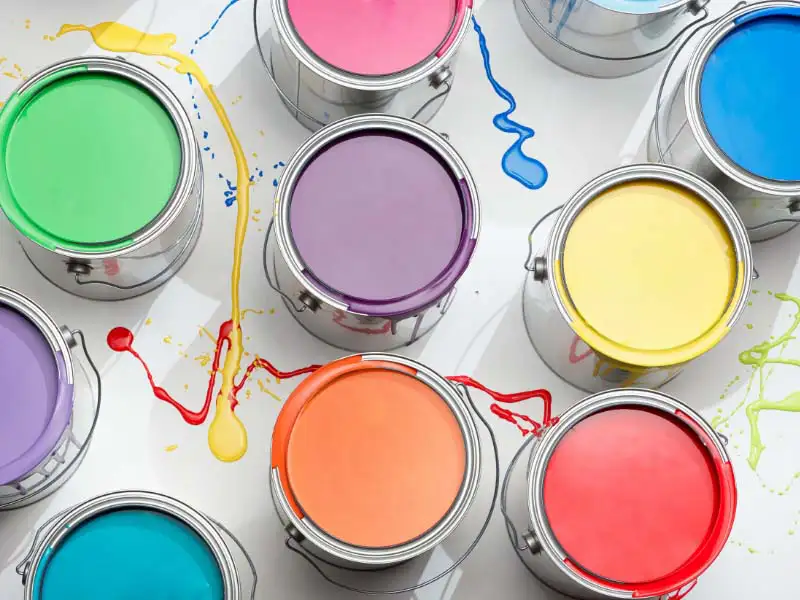
The Types of Paints for Interior and Exterior Walls
Commercial Painting, Exterior Painting, House Painting Ideas, Interior painting, Painting Tools, Residential Painting Wall paints is an essential utility for home decor purposes. It maintains your place and also gives an aesthetic look. Painting your walls is an important task and you should do it at regular intervals. Though different types of renovation demand different types of paint and strategies, and below we are presenting to you a few available types of paint and their finishes to consider before you paint your house.
Most people wanting to paint and refurbish their houses also get confused with the term ‘paint sheen’ and ‘paint finish.’ When you are comparing three or four different brands of different companies, you never know whether you are comparing an apple to apple or not. You might be even comparing interior paint with an exterior paint or a paint meant for metal with paint meant for wood. This lack of knowledge and understanding of the various types of house paint leads to make poor decisions. The right way to understand the types of paint available is by learning about their components.
So, read on to learn about the various types of wall paints available in the market.
Paints are manufactured using six different components, each rendering a specific quality to the paint. Let’s know about them in detail.
01. Base
Base is the main constituent that forms a bulk of the paint. It forms the body of paint.
02. Colouring Pigment
pigments are insoluble powders of very fine particle size. They impart colour and opacity to the paint.
We have also written detailed information on colouring pigments in the post, Colouring Pigment in Paint: All You Need to Know About
03. Inert Filler or Extender
Fillers are used to impart various physical properties other than colour i.e. opacity or texture or simply to make handling of paint better.
04. Vehicle or Binder
A vehicle is also referred to as the binder or resin that holds the paint together. It also binds the paint to the surface to which it is applied. Further, this ingredient allows the paint to spread uniformly.
05. Solvent or Thinner
Solvent or thinner increases the fluidity of the paint. It makes the paint workable by increasing the spreading capacity of paint. Thinner helps to penetrate into the porous surfaces, thereby making the paint smooth and easy to work with.
06. Additives
Additives are usually added in small quantities in different types of paints used in building and construction. It changes the properties of paint. These are also added to improve the paint properties, such as colour opacity, pigment dispersion, and stability.
Most of the ingredients mentioned above are always present in all types of paints. It’s only the proportion of each constituent that changes.
The type of paints
1. White Wash
A Whitewash is the most inexpensive range of paint. The paint material is made by mixing powder, chalk, or slaked lime in water and an inappropriate amount. Mix Adhesive materials like Fevicol additionally with it for better adhesiveness and long-lasting.
2. Distemper Paint
The distemper paint is a shape of water-based paint, on hand in many top-notch colours. The principal elements of this type of paint embody water, lime, colouring pigments, and chalk. It can be cited to be a higher mannequin of the whitewash paint variety. When sturdiness and longevity are no longer prerequisites, the distemper paint can be used in each interior and exterior of houses or buildings. The paint range is additionally relatively cheaper and on hand in paste and powder forms.
3. Emulsion Paint
The word emulsion signifies a solution of two liquids that do not mix with every other completely. In most emulsion paints, water is the solvent or the primary vehicle/medium within which the pigment, binders, and additives are added and continue to be dispersed. Emulsion paints provide good flexibility, dry up quickly, and are good for inside and external surfaces.
4. Oil Paints
The critical vehicle in oil paint is oil varnish or oil inside in which pigment particles are suspended. These oils would possibly moreover embody nut oil, poppy oil, Tung oil, linseed oil, and others.
Oil Paints generally have many best properties. They face up to stain, are large, durable, smooth, as top as glossy. The drawback of this paint type is that the oil paints emit superb fumes which are toxic and unsafe for human health.
5. Enamel Paint
For making the enamel paint, the sleek fabric is delivered to oil-based paint. Petroleum spirit, resinous materials, zinc white, and white lead may additionally moreover be used in manufacturing and enamel paint. The opaque, glossy, and tough cease of the paint can also, in addition, be pretty applicable in many instances.
6. Cement Based Paints
When cement is the most integral constituent of paint, it can grant for utmost sturdiness and hardness. These paints can be a better option on the indoors as nicely as exterior walls. Cement paint no longer requires any exclusive natural. It can also additionally moreover be a fantastic choice for an exterior surface, as it can restrict grime accumulation, and in addition stop water penetration.


Leave a Reply